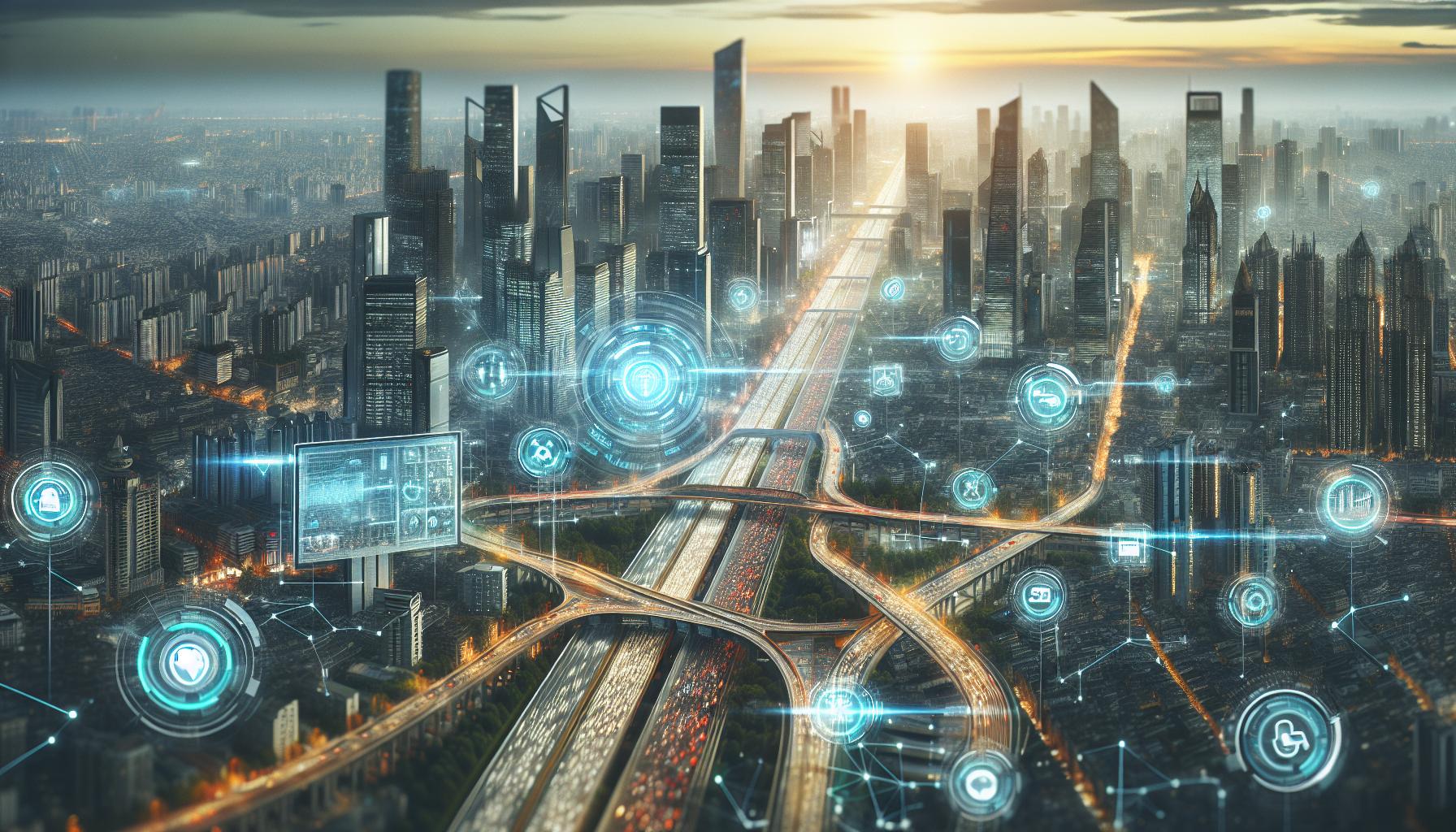Imagine a world where your fridge not only keeps your food fresh but also orders groceries while you binge-watch your favorite show. Enter 5G IoT, the superhero of connectivity that’s about to revolutionize everyday life. With lightning-fast speeds and ultra-reliable connections, this dynamic duo of fifth-generation mobile networks and the Internet of Things is set to transform how devices communicate.
What Is 5G IoT
5G IoT integrates fifth-generation mobile networks with the Internet of Things. This combination enhances the speed, reliability, and efficiency of device communication. It enables vast numbers of devices to connect seamlessly, transforming how industries and consumers interact with their environments.
Connections between devices become faster and more efficient. For example, smart cities can utilize 5G IoT to manage traffic systems, monitor energy usage, and improve public safety through real-time data analytics. These advanced capabilities foster improvements in operational efficiency and reduce costs across various sectors.
Autonomous vehicles benefit significantly from this technology, relying on ultra-fast communication to process data and make split-second decisions. Smart appliances also gain from 5G IoT, allowing features like automatic grocery replenishment and remote monitoring of food stocks.
Healthcare applications thrive under this model, where wearable devices transmit patient data instantly to medical providers. Real-time monitoring leads to improved patient outcomes and timely interventions. Industries like agriculture also utilize sensors powered by 5G IoT to monitor soil conditions and crop health accurately.
As connectivity expands, the potential for innovative applications grows. Businesses can develop new revenue streams while enhancing customer experiences. The evolution of 5G IoT continues to drive advancements across multiple domains, impacting daily life and work.
Speed, capacity, and low latency define the transformative nature of 5G IoT. This technology opens the door to a more connected and intelligent world, where the interaction between devices creates efficiencies and enhances user experiences.
Key Features of 5G IoT


5G IoT introduces several key features that elevate device connectivity to unprecedented levels.
Enhanced Connectivity
Enhanced connectivity stands out as a hallmark of 5G IoT. Vast numbers of devices can connect seamlessly without network congestion. This capability benefits various sectors, allowing smart cities to utilize extensive sensor networks for traffic flow and resource management. Businesses also improve how devices communicate, leading to more efficient operations. For instance, autonomous vehicles exchange data with one another and infrastructure continually. This constant interplay allows for coordinated responses to rapidly changing environments. In healthcare, connected devices relay real-time patient information, significantly improving response times and care quality.
Low Latency
Low latency significantly characterizes 5G IoT. With response times as low as one millisecond, devices interact almost instantaneously. This feature enhances applications that require real-time feedback, such as remote surgeries or automated driving systems. Quick data transmission allows for immediate decision-making, optimizing processes across various industries. In manufacturing, robots can respond to commands without delay, increasing productivity. Real-time analytics become possible, facilitating faster adjustments in business operations. Users experience smoother interactions with smart devices at home, making tasks seamless and intuitive. Overall, low latency empowers a new level of performance and efficiency in a connected world.
Applications of 5G IoT


5G IoT significantly impacts various sectors, enabling smarter cities and highly efficient industrial processes. With its advanced capabilities, this technology transforms operational frameworks across domains.
Smart Cities
Smart cities benefit immensely from 5G IoT through enhanced connectivity and data collection. Real-time monitoring of traffic patterns leads to improved traffic flow, reducing congestion. Waste management systems leverage this technology to optimize collection routes, cutting operational costs. Energy grids utilize smart meters, allowing users to monitor consumption patterns and make adjustments. Public safety initiatives employ connected surveillance systems, ensuring quicker emergency responses. Overall, the integration of 5G IoT empowers cities to deliver better services, enhance sustainability, and improve the quality of life for residents.
Industrial Automation
Industrial automation experiences a revolution with the introduction of 5G IoT. Factories now utilize connected machines that communicate in real-time, enhancing production efficiency. Predictive maintenance is a key application, where sensors detect equipment anomalies, minimizing downtime. Supply chain management benefits from advanced tracking systems, allowing for better inventory control. Robotics integrates seamlessly with this network, facilitating collaborative robots that enhance human capabilities on the assembly line. Flexibility increases due to agile manufacturing setups made possible by the responsive nature of 5G IoT, resulting in increased productivity and profitability.
Challenges and Considerations


5G IoT presents various challenges that require attention. Security concerns and infrastructure requirements play significant roles in the successful implementation of this technology.
Security Concerns
Security poses a major challenge for 5G IoT. The increased number of connected devices raises the likelihood of cyberattacks. Device vulnerabilities can lead to data breaches and unauthorized access. Effective measures, such as encryption and authentication protocols, must be implemented to safeguard sensitive information. Organizations need to prioritize security in their IoT strategies to mitigate risks. Regular software updates and patches also enhance device protection against evolving threats.
Infrastructure Requirements
Infrastructure needs represent another critical challenge. 5G networks require extensive investment in new hardware and technologies. Upgrading existing systems is essential to support high-speed connectivity. Dedicated base stations and small cells are necessary to ensure optimal coverage, especially in urban areas. Coordination among service providers, government bodies, and businesses is crucial for successful deployment. Effective planning and resource allocation can streamline the transition to 5G IoT systems, ultimately enhancing their efficiency.

